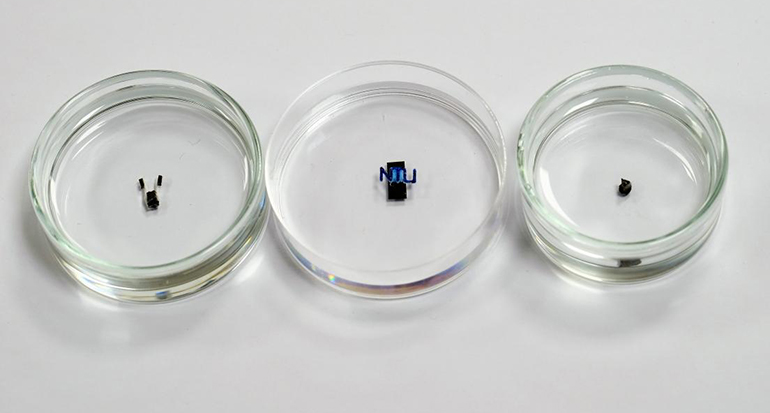
Researchers at Nanyang Technological University, Singapore have developed miniature robots that are highly maneuverable, and can rapidly move in six degrees of freedom. These tiny devices are magnetic and can be controlled using an electromagnetic coil system that precisely manipulates the direction and strength of magnetic fields. The researchers hope that their technology could pave the way for tiny surgical robots that could access difficult to reach areas in the body, such as the brain.
Microrobots are a significant focus for researchers at present, and their potential in the biomedical realm is significant. Tiny robots that can enter our bodies and perform complex tasks would be very useful, but achieving this requires some innovation and persistence. This latest development showcases highly maneuverable and dexterous robots – an impressive feat given that they are approximately the size of a grain of rice.
The robots can move in six degrees of freedom (DoF), meaning that they can move along and rotate around three spatial axes. While this has been achieved in previous tiny robots, the current devices can perform these movements very rapidly, achieving specific movements that are 43 times faster than those of previous devices and with significantly increased torque.
“My team sought to uncover the fundamental working principles of miniature robots that have six-DoF motions through this work,” said Lum Guo Zhan, a researcher involved in the study, in a press release. “By fully understanding the physics of these miniature robots, we are now able to accurately control their motions. Furthermore, our proposed fabrication method can magnetize these robots to produce 51 to 297 folds larger six-DoF torques than other existing devices. Our findings are therefore pivotal, and they represent a significant advancement for small-scale robotic technologies.”
The magnetic devices can be made using soft materials, enhancing their potential for use in the body, and are controlled through precise changes in the strength and direction of an applied magnetic field. The devices are also dexterous, and can squeeze into tight places, suggesting that they have the potential to access difficult-to-reach areas. For instance, a jellyfish-type robot was able to squeeze through a tight opening when it was suspended in water.
With another design, a gripper robot, the researchers were able to construct a 3D structure by picking up and assembling various structural components. “Besides surgery, our robots may also be of value in biomedical applications such as assembling lab-on-chip devices that can be used for clinical diagnostics by integrating several laboratory processes on a single chip,” said Xu Changyu, another researcher involved in the research.
Check out the new robots in this video:
Study in Advanced Materials: Small-Scale Magnetic Actuators with Optimal Six Degrees-of-Freedom
